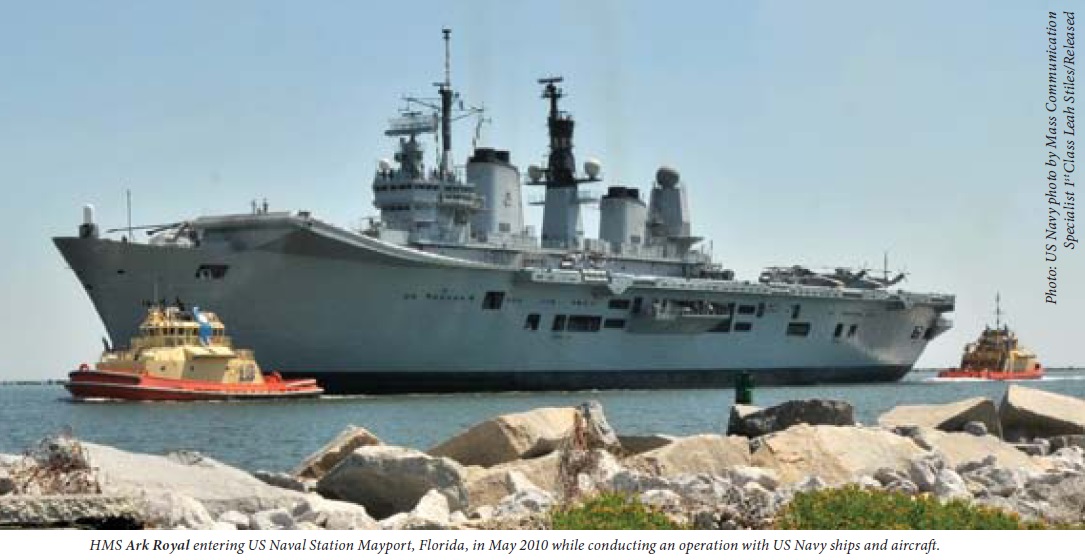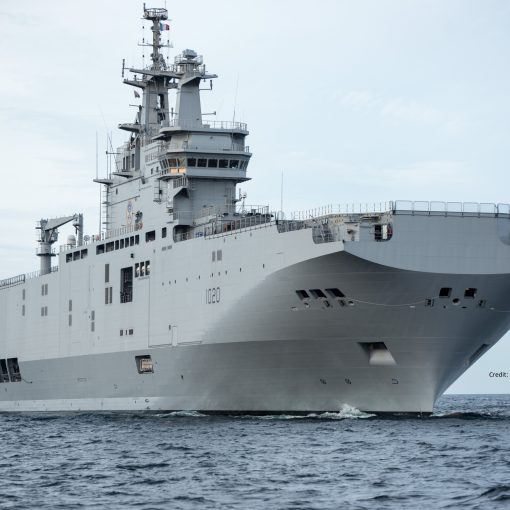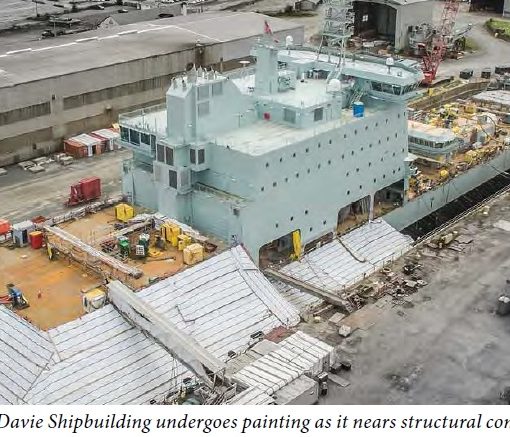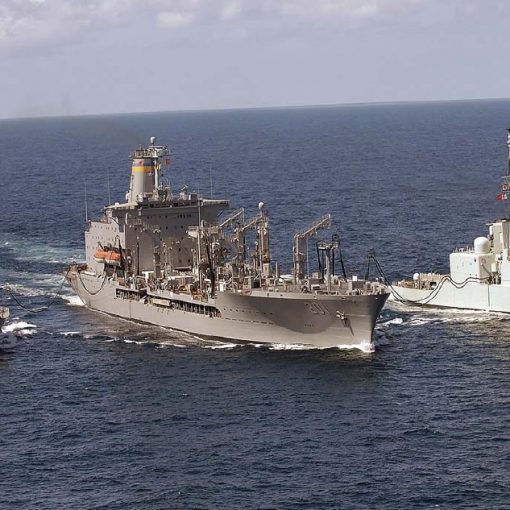Reports, all unsubstantiated so far, continue to surface about the possibility of Canada acquiring a ship or ships capable of amphibious operations. (See: “Big Honkin’ Ships” by Chris MacLean in issue 5/2010, pp. 14-15, of Frontline Defence here. See also: “A Mistral-class ship for Canada” by David Pugliese in the Wednesday, 26 January 2011 issue of the Ottawa Citizen here.)
The candidates appear to be either a used Bay-class landing ship from the United Kingdom (see a post by Garry Noble on them here and see class details here) or the Mistral-class amphibious assault, command and force projection ship from France (see class details here). A quick comparison using data from the same open-source website is provided in the table below.
|
Mistral-class |
Bay-class |
|
| Crew |
160 |
60 |
|
Lift - personnel |
900 (max.) 450 (normal) |
??? (max.) 365 (normal) |
|
Lift - vehicles |
230 |
1,200 lane-metres |
|
Lift - Helicopters |
16 |
Flight Deck only |
|
Lift – Landing Craft |
4 |
3 + 2 ‘mexeflotes’ |
|
Lift - Cargo |
Unknown |
12 x 40 TEU or |
|
Displacement (Full Load) |
21,300 tonnes |
16,200 tonnes |
|
Speed |
19 knots |
18 knots |
|
Range |
11,000 n.m. |
8,000 n.m. |
|
Endurance |
45 days |
Unknown |
|
Length |
199 m. |
176 m. |
|
Beam |
32 m. |
26.5 m. |
|
Draught |
6.2 m. |
5.8 m. |
|
Propulsion |
Diesel-electric, 2 shafts |
Diesel-electric, 2 shafts |
The two ships have some similarities but there are also many differences. Most importantly, Mistral and her sisters are naval vessels built to naval standards. The Bay-class ships are built to commercial standards for use by the Royal Fleet Auxiliary with some modifications to improve damage control measures and general durability.
Note that no information on price is provided.
The French ships are built with the amphibious capability as a primary characteristic. The British ships are primarily cargo movers with a secondary ability to conduct amphibious landing of people, vehicles and materiel in an administrative manner, rather than a military tactical one. Likewise, the increased emphasis on military operations will mean Mistral will have more aviation support and sustainment capabilities. The Bay-class ships have a flight deck, but little else for air operations.
Allowing four or five meters of storage space per vehicle means the Bay-class can move as many or more vehicles than the Mistral-class ships on about 5,000 less tonnes of displacement. The multi-purpose nature of the French amphibious ships’ design means a certain amount of space must be reserved to support specific functions and cannot simply be left void for cargo storage. The need for more space to support these functions results is their greater length, beam and draught than the British ships. Likewise, the military nature of the amphibious combat ship results in a larger crew size than the mainly logistical character of the Bay-class ships.
The non-existent logistical capacity of the Canadian navy during Operation Hestia, the disaster relief effort to Haiti, resulted in some good initial triage work but little in the way of sustained effort or significant results. This was reported accurately by Brian Stewart, Senior Fellow with the Monk Centre, in his article entitled “Just How Shipshape are We?” (CBC News, 10 February 2010):
“Size Matters. The big problem [with the Canadian relief effort] is size. Both Halifax (4,700 tonnes) and the slightly larger Athabaskan (5,100 tonnes) are fast, multi-purpose ships adept at many sea operations around the globe. But they're positively puny in terms of the supplies they can carry. They were never designed to provide the kind of strategic sealift needed to respond to global emergencies like Haiti or the tsunami that ravaged Southeast Asia five years ago. These vessels can carry a few hundred tonnes of supply, where many thousands are needed. In fact, if you combine the size of the two ships together they amount to only about one-third the size of the modern joint support ships (JSS) that the navy has long been promised, but which still languish on the drawing board.”
The navy complained bitterly that the size and cost of the JSS project was driven mainly by additional capability needed to facilitate the movement of army vehicles and stores. Now that it looks like the JSS project has been scaled back significantly to an enhanced oiler-replenisher, is it the army or the navy that still sees the need for General Hillier’s ‘Big Honkin’ Ship’? Should a first force structure move into amphibious operations be focused on military force projection or logistical support and sustainment capabilities?
If the government is interested in acquiring an amphibious ship or ships to improve the national ability to respond in a disaster relief or humanitarian assistance operations, then the logistics capacity should take precedence over the military characteristics. If there is a higher requirement to conduct joint military operations from the sea, then the military characteristics should take precedence over the logistical capacity. The problem is, like the arguments over the F-35 fighter, that the military requirement has not been stated. In contrast, the logistical requirement has been clearly demonstrated, just as Brian Stewart reported and has been commented upon on this website. In the absence of a direct military threat, is it logical that an unsubstantiated military requirement to counter an unidentified military threat can dictate the capability requirements of the navy? This seems to be more evidence of Cold War thinking driving future force goals.





